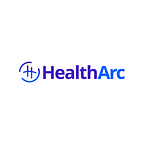In this technologically advanced world, a wristwatch tells a lot more than time. It can track our steps, measure our heart rate, count our oxygen levels, and tell about our sleep quality among many other healthcare features.
Imagine just putting on a wearable device on your wrist and getting your vitals tracked in just seconds. This powerful technology is transforming the healthcare sector and acting as a boon in remote patient monitoring. By getting real-time insights into a patient’s health data, a physician or a qualified healthcare provider can promote patient outcomes, timely diagnosis, tailored treatment plans, and better quality of life.
In this blog post, we’ll delve deeper into wearable devices and the role they play in remote patient monitoring (RPM).
Evolution & Mechanism Of Wearable Devices
Though wearable technology has been present for many years, it’s adapting every day with new features and sensors being introduced. The modern-day wearable devices span from fitness trackers and smart watches to smart glasses and ECG monitors that offer a myriad of health-tracking features.
Compared to Bluetooth devices, a broader range of wearables are readily available now designed on the latest technology, ranging from IoT, cloud computing, artificial intelligence (AI), and machine learning. The vitals or data collected by these devices is analyzed and interpreted by healthcare professionals in an RPM setting to provide actionable insights into a patient’s health and well-being.
What makes these devices collect, record, and interpret health data are sensors that are a sort of miniature device designed to monitor a wide range of physiological parameters, such as heart rate, blood pressure, body temperature, body glucose, and oxygen levels. Once collected, the data is sent to a connected device, usually a smartphone or computer, for preliminary processing and analytics.
This data transfer is accomplished using wireless communication technologies such as Bluetooth, Wi-Fi, and cellular connectivity. Advanced algorithms and artificial intelligence (AI) are used for predictive analytics that help understand data, discover patterns, and predict possible health risks. A healthcare provider can then act in a proactive manner to keep track of a patient’s real-time health reports and gain critical health insights.
Role Of Wearable Devices In RPM
Ever since being introduced, wearables have made a breakthrough in the healthcare industry. They are not just fitness trackers anymore and being used to remotely monitor patients via a remote patient monitoring platform, resulting in more tailored and effective patient management. Sensors embedded in wearable devices measure physiological factors such as blood pressure, heart rate, body temperature, and glucose levels. Some of its benefits include:
1. Early detection of cardiac problems
Wearable devices with heart rate monitoring capabilities can aid in the early detection of abnormal heart rate. This early detection may allow for timely medical intervention and diagnosis.
2. Remote patient monitoring
Wearable monitors allow for remote monitoring of patients, providing healthcare professionals with real-time data on their overall health and wellness.
3. Improved patient engagement
Wearable devices encourage active patient participation in controlling their ill-health conditions by monitoring heart rate, physical activity, and other health indicators that ensure overall better health outcomes.
4. Data collection for research
Large-scale data acquired from wearable devices can provide useful insights into population health and support research initiatives.
Wearables Empower Patients, Providers & Healthcare Industry
Wearable devices provide patients with more control over their health. Users can see that they are exercising, and it is reflected positively in their vitals. They notice how eating healthier, such as eating less salt, improves their health. The real-time feedback greatly helps improve health and prevent sudden illnesses.
Wearables provide patients more autonomy and control over their health, allowing them to make lifestyle changes that result in measurable gains, while physicians get access to more real-time data that they can utilize to provide patients with guidance or therapies that prevent disease progression.
Embrace Your Health Goals With HealthArc’s Cellular Devices & Wearables
At present, wearable devices have greatly transformed virtual healthcare by playing a crucial role in remote patient monitoring. These devices make virtual care more efficient, more accessible, and patient-friendly through real-time, continuous health data.
The time is right for healthcare professionals and patients to embrace wearables in RPM, care coordination, chronic care management, and other virtual care technologies.
HealthArc’s RPM software is intended to encourage a healthy lifestyle while reducing the cost burden on patients and healthcare providers. Continuous monitoring using wearables can lead to early treatments, resulting in better patient outcomes.
Schedule a demo to learn more about how our cellular devices and wearables can boost your RPM program or call us today at +201 885 5571 to set up a consultation with our experts.
